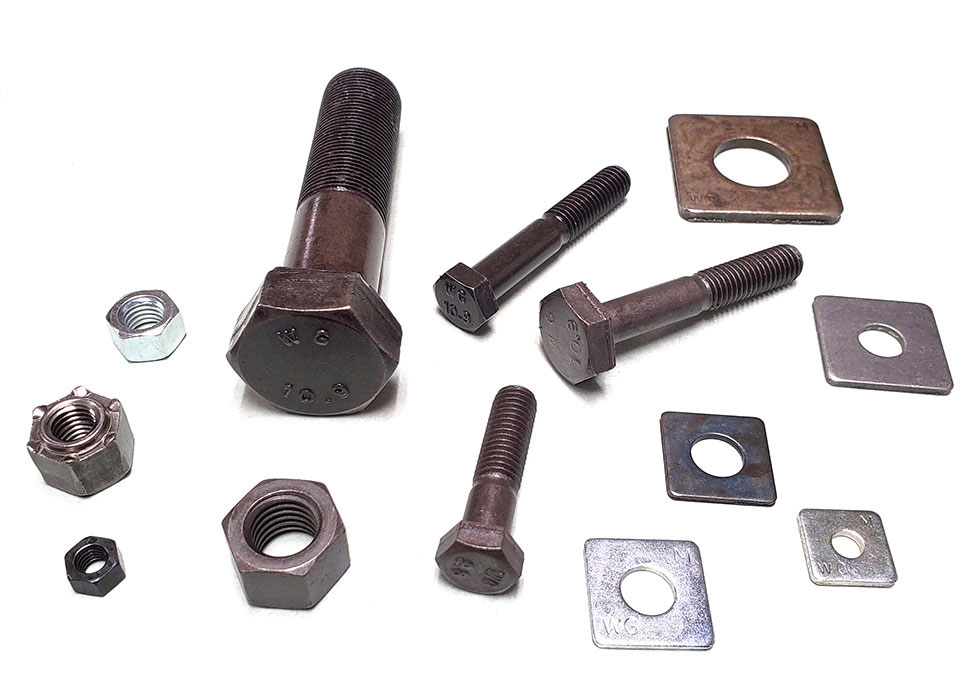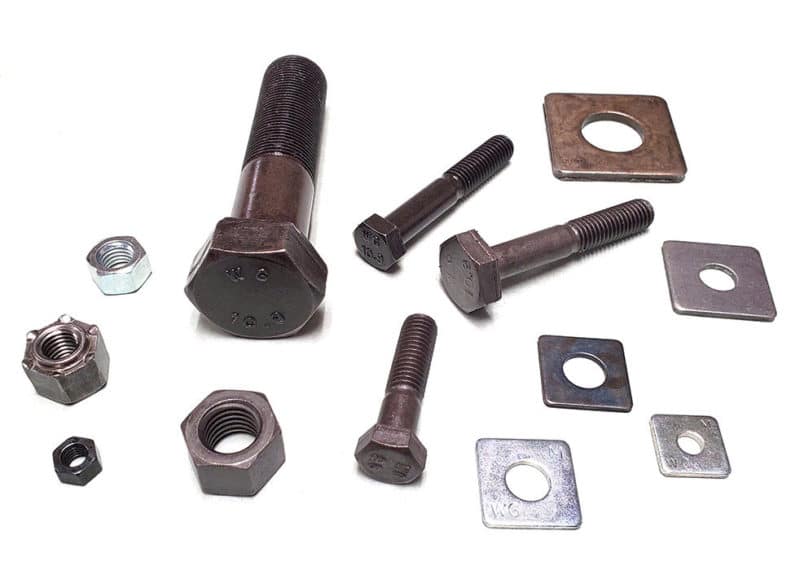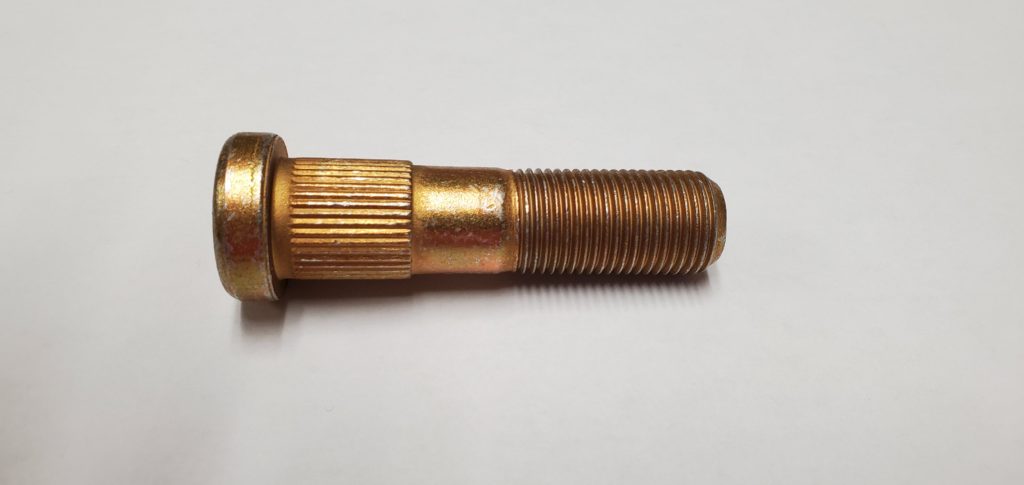The fastener industry can be complex and technical, especially when you get into the realm of per-spec, specialty parts. We’re here to help you navigate it.
If you’re looking for general information on what fasteners are, what they’re used for, how they’re made, and more, you’re in the right place. Below are 15 of our most frequently asked questions about fasteners. Answers are provided by our experienced team.
15 Frequently Asked Questions About Fasteners
The 15 questions listed below are just a starting point for the fastener industry. If you have a question that you don’t see on this list, feel free to reach out to us. We’ll likely have an answer, or we’ll at least be able to direct you to someone who does.
1. What Are Fasteners?
The term “fastener” refers to a broad category of tools and hardware used to mechanically join two or more materials together. In most cases, fasteners create non-permanent joints between two or more materials. However, there are some exceptions where fasteners can be permanent solutions.
You’re probably aware of some of the most common types of fasteners; things like screws, nuts, bolts, studs, etc. But there are thousands of variations of those, as well as many other types of fasteners. For more on fastener types, check out Questions 2 and 3.
2. What Are Specialty Fasteners?
At Wilson-Garner, we’re a proud manufacturer of specialty fasteners. But we often get the question, “What exactly are specialty fasteners, and how are they different from traditional ones?” from prospective customers. It seems like a pretty straightforward question with a straightforward answer — but the truth is, it’s not always as simple of a definition as it seems. Here’s our best shot at it.
Specialty fasteners are fasteners designed and manufactured for a certain industry, application, or material. They’re made following unique specifications (often provided by OEMs) that set them apart from the common fasteners you’d find in a hardware store or used in a widely practiced application.
The tricky part of this definition is that “specialty” is a pretty fluid word. You could say that most fasteners are specialty fasteners — it just depends on to what extent.
3. How Many Types of Fasteners Are There?
We’ll put it this way: if we were to list all the types of fasteners available, we’d be typing for hours. There is an astounding number of fasteners, such as screws, clips, bolts, rivets, etc. Further yet, each type of fastener also has a range of subtypes that lend themselves to particular applications.
For the sake of brevity and simplicity, we discuss three of the most common types of fasteners (and their subtypes!) in this blog.
4. How Are Fasteners Manufactured?
There are three common fastener manufacturing methods: cold forming, hot forging, and machining.
- Cold forming is the process of forming a fastener without heating up the metal. It’s achieved by pressing or striking the metal within a form or die. You may have also heard or seen it referred to as “cold heading.”
- Hot forging is the process of heating up metal to a point where it becomes malleable, then forming it in a die.
- Machining is the process of cutting away metal to meet a fastener’s desired dimensions.
There are advantages and disadvantages to each of these processes, which you can read more about here. At Wilson-Garner, we’re a big fan of cold forming (find out why in Question 5!), but there are some applications where we use machining techniques as well.
5. What Are the Advantages of Cold Forming Fasteners?
Again, cold forming is the process of forming a fastener without heating up the material. It’s done by pressing or striking the material within a die to create desired features and dimensions.
Cold forming is arguably the best way to manufacture fasteners. Why?
- It produces less waste. Cold forming is done without removing any material, which reduces waste and improves material utilization.
- It’s fast. Cold forming is a high-speed process, allowing some manufacturers to make up to 100 parts per minute.
- It creates stronger fasteners. Through a process called “work hardening,” cold forming adds strength to the fastener. The material is shaped without being cut or heated, allowing it to keep its original grain structure.
- It requires less energy. Cold forming requires no additional energy to heat the material before manufacturing.
- It works for most metals. Cold forming works on a bunch of metals, including stainless steel, copper, brass, aluminum, lead, and bronze. It’s an especially good option when working with alloy steel and low carbon steel.
6. What Materials Are Fasteners Made Of?
Fasteners can be made of many different materials. Some common examples are steel (and various steel alloys), aluminum, brass, titanium, and even plastic. But while there are endless possibilities, it’s important to know which material may be best suited for your application.
The material you choose can influence a number of fastener characteristics and performance metrics, such as tensile strength, weight, corrosion resistance, and longevity.
RELATED: Need a specialty bolt, screw, or stud? Wilson-Garner can help.
7. What Are Fastener Coatings?
Fastener coatings are chemicals applied to metal fasteners to improve their performance and longevity. Just like the main material chosen, fastener coatings can affect performance metrics like corrosion resistance, lubricity, aesthetics, and health (some coatings have been found to be toxic).
It’s important to choose the right fastener coating for your application, depending on how you need your fastener to function. However, it’s also important to remember that not all applications require a fastener coating. If yours doesn’t need one, it’s not worth spending time and money on.
8. What Are Rolled Threads?
Two main ways to create external fastener threads are rolling and cutting.
Rolled threads are formed by pressure. The fastener is rolled through a set of threading dies that displace the material and form threads. No material is removed, and all grain structure is left unchanged during this process. It’s a cold-forming process (more on that in Question 5).
Rolled threads are often the best choice. They’re more durable, accurate, and resource-efficient than cut threads.
9. What Are Cut Threads?
Two main ways to create external fastener threads are rolling and cutting.
Cut threads are formed by cutting fastener material away from a round bar. It’s typically done with a threading die or single-point machining tool. If you’re working with a large diameter or a part with cavities, thread cutting is the way to go.
10. What Is a Knurl?
The purpose of a knurl is to create a gripping mechanism. It’s usually found on the body of the fastener — in most cases, a wheel stud. Then, when the fastener is pressed into a hole, the knurl will grip the hole and prevent the fastener from spinning or slipping.
You can see the knurl on the photo of a wheel stud below:
11. What Are Fastener Grades, and Why Are There So Many of Them?
Fastener grades refer to requirements for mechanical properties of fasteners. In order to qualify for a certain grade, a fastener must conform to material, dimensional, and strength requirements for that grade. Different specifications and standards define the mechanical requirements for each grade or property class (the metric equivalent of grade).
There are a ton of different standards and specifications out there which define their own grades or property classes. Many of these specs define multiple grades depending on the desired strength of the fastener. Some examples of these specs include SAE J429, ASTM A354, and ISO 898-1. Check out this blog for more specific information.
12. What Does This Head Marking Mean?
With most fasteners, the head marking signifies a manufacturer’s identifier, a grade marking, or both. You can find examples of how to read these head markings in the following blogs:
- What Do Screw and Bolt Head Markings Mean?
- Understanding a Few Common ASTM Inch-Series Bolt Grade Markings
- Understanding Metric Bolt Head Markings
13. What Quality Standards Do Fasteners Need to Meet?
Quality standards are guidelines and requirements established by manufacturers, OEMs, government agencies, etc., and they’re everywhere in the fastener industry. Quality standards can be applied to just about every aspect of fastener manufacturing, such as quality management systems, materials, threads, surface coatings, and head markings. Certain standards are also applied to fasteners made for a particular industry, such as military or automotive fasteners.
Some quality standards we commonly come across here at Wilson-Garner include:
- International Standards Organization (ISO) standards like ISO 9001:2015, ISO 17025:2017, ISO 16047:2005, and ISO 898-1.
- Deutsches Institut für Normung (DIN) standards, which are losing popularity and are only being used for products without an ISO or EN standard.
- American Society of Mechanical Engineers (ASME) standards like ASME B18.2.1.
- American Society for Testing and Materials (ASTM) standards like ASTM A193 and ASTM A194.
14. How Are Fasteners Tested?
Many fasteners must be tested before being approved for use in on-the-market products. This ensures they perform as intended, reducing the risks of product failure and consumer harm.
There are a lot of tests that can be performed on fasteners, with some being more common than others. There aren’t any that are always used, but there are some that are frequently used, such as:
- Proof load, tensile strength, and yield strength testing
- Rockwell hardness testing
- Salt spray testing (test for corrosion resistance)
- Magnetic particle testing
- Decarburization testing
- Torque-tension testing
- Coefficient of friction testing
15. How Do I Choose the Right Fastener for My Application?
This is the toughest question of them all. Once you have all the fastener information you need, how do you actually go about choosing one for your application? Here are some important aspects we recommend taking into consideration:
- Fastener type
- Fastener material
- Fastener coating
- Fastener size
- Fastener grade
- Fastener thread type
Even once you’re through that list, you may still feel a little lost. In that case, it’s best to consult with an experienced fastener manufacturer like us at Wilson-Garner. We’re not designers, but we can listen to your needs and make sound recommendations based on them and each of the factors listed above.
Have More Questions About Fasteners? Contact Wilson-Garner.
If you have a fastener-related question that’s not mentioned in this article, we can still help. Our experts are happy to direct you to the answers you’re looking for and provide recommendations on which solutions may work best for your application. Get in touch by calling us at (800) 656-2658 or contacting us online.



